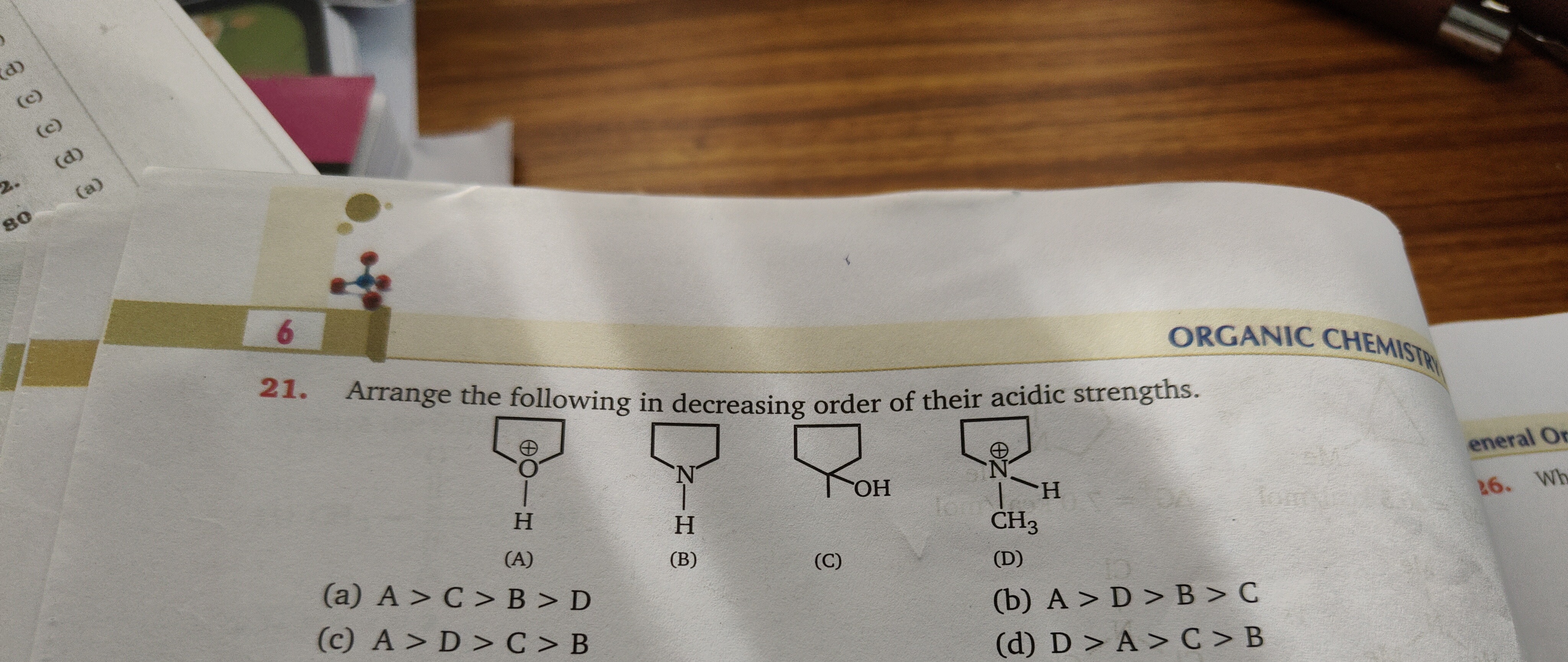Question
Question: Arrange the following in decreasing order of their acidic strengths....
Arrange the following in decreasing order of their acidic strengths.

A
A > C > B > D
B
A > D > C > B
C
A > D > B > C
D
D > A > C > B
Answer
A > D > C > B
Explanation
Solution
The acidic strength of a compound is determined by the stability of its conjugate base. A more stable conjugate base corresponds to a stronger acid.
- Compound (A): This is a protonated cyclic ether (oxonium ion). Such species are very acidic. Upon losing a proton, it forms a neutral cyclic ether, which is a stable conjugate base.
- Compound (B): This is pyrrolidine, a cyclic secondary amine. Amines are very weak acids.
- Compound (C): This is 2-methylcyclopentanol, a cyclic secondary alcohol. Alcohols are weakly acidic.
- Compound (D): This is N-methylpyrrolidinium ion, a protonated cyclic secondary amine (ammonium ion). Such species are acidic.
Comparison:
- Protonated species (A and D) are significantly more acidic than neutral species (B and C).
- Comparing (A) and (D): Protonated ethers (A) are much more acidic than protonated amines (D). So, A > D.
- Comparing (B) and (C): Alcohols (C) are more acidic than amines (B) because oxygen is more electronegative than nitrogen, stabilizing the negative charge better in the conjugate base. So, C > B.
- Comparing (D) and (C): Protonated amines (D) (pKa of conjugate acid ~ 10.3) are more acidic than alcohols (C) (pKa ~ 16-18). So, D > C.
Combining these inequalities (A > D, D > C, C > B), the decreasing order of acidic strengths is A > D > C > B.
